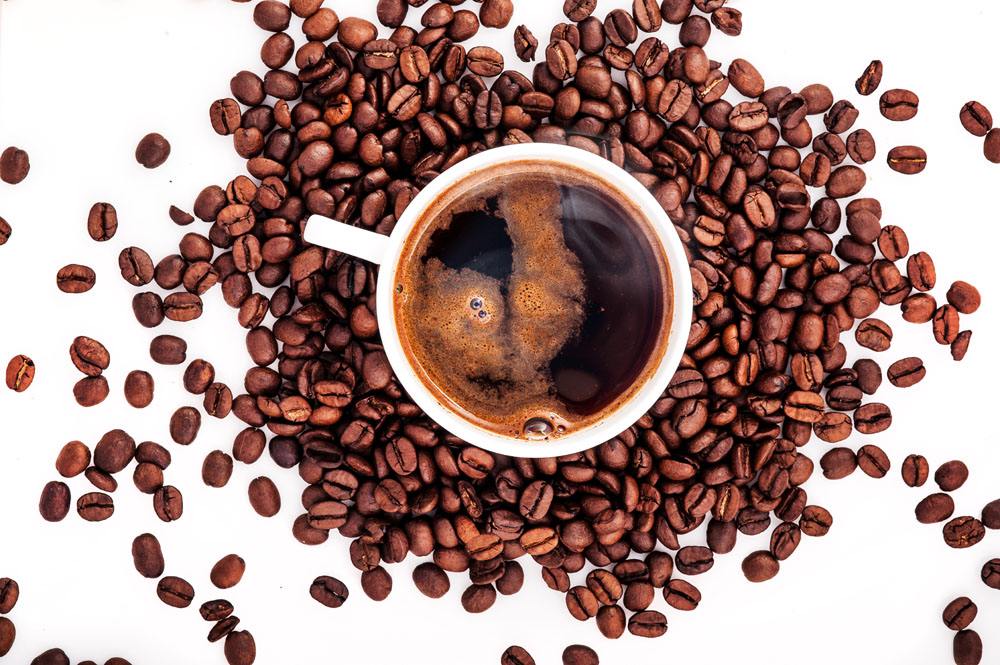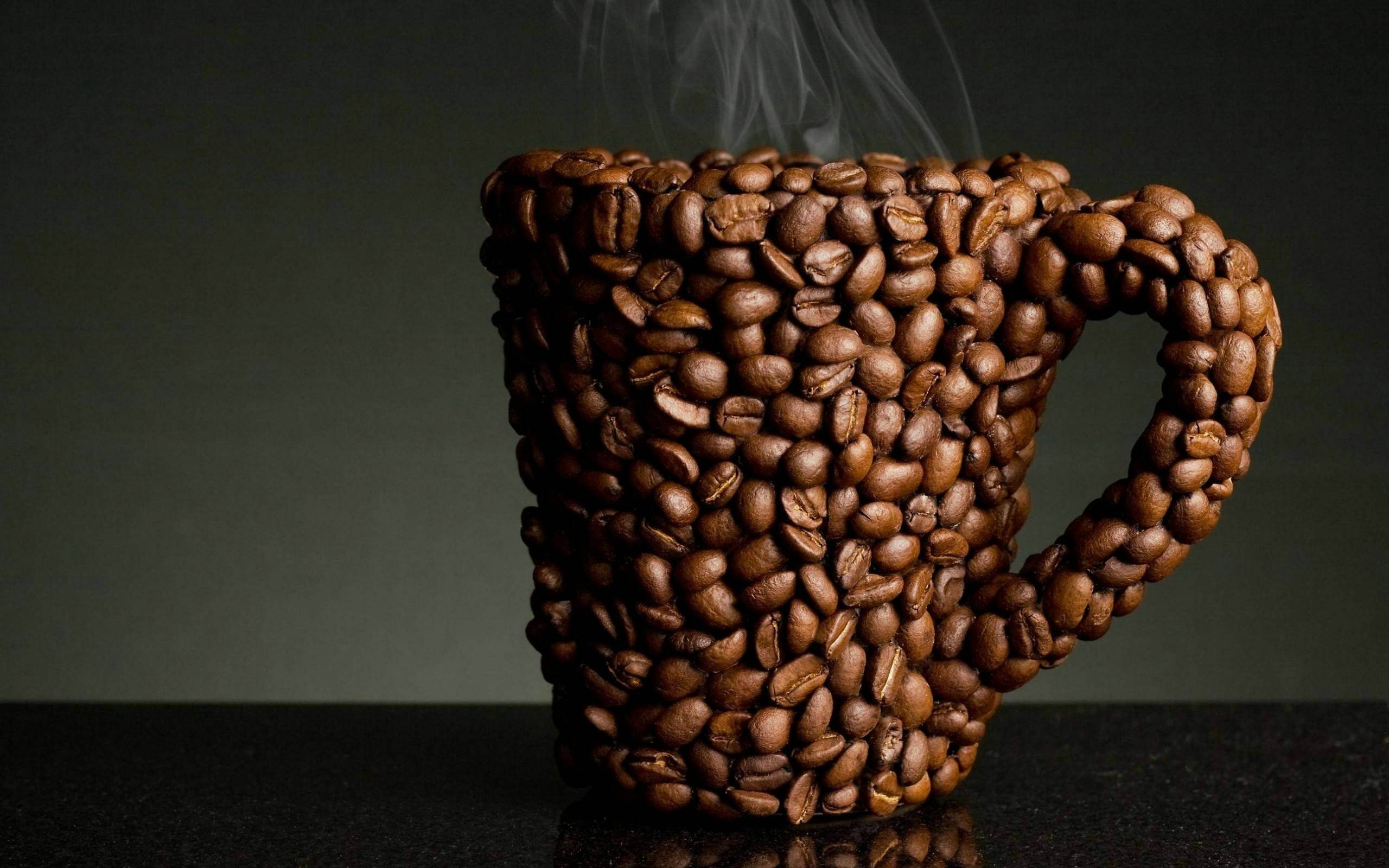Are the coffee beans produced in Indonesia good? the varieties of Indonesian coffee beans
Follow the caf é (Wechat official account vdailycom) and found that Beautiful Cafe opened a small shop of its own.
Indonesia (Indonesia) Indonesia well-known representative coffee beans: Java (Java), Sumatra Mantenin (Sumatra Mandheling), Sulawesi Sulawesi (Celebes) Kalossi.
Indonesia produces coffee beans mainly in Java, Sumatra, Sulawesi and other three islands, all of which belong to volcanic topography. It is generally believed that Indonesian coffee beans have a strong aroma and low acidity, with a hint of traditional Chinese medicine and soil.

Sumatra (Sumatra) coffee beans
Mandheling, produced in the mountains of Sumatra, is world-famous and rich in texture. In contrast to the wine-like taste of Sumatra and East Africa, beans from Indonesia and New Guinea show a different flavor, with a sticky texture, sour taste buried in a complex taste, a dark smell of herbs or wild mushrooms, and a sweet finish that goes deep into the throat for three days. They can play the role of bass in the mix. Many people believe that in west-central Sumatra, Mandheling and Ankola, grown near the mountains of Padang, are among the richest textured coffees in the world, of which Manning is famous and Lindong Lindong Manning beans are the most acclaimed. These beans are semi-washed, that is, they are dried and then washed off with hot water, which makes the beans have the charming earthy smell of dried beans while maintaining neat quality. Aged Sumatra (Aged Sumatra) is a specially treated bean. Raw beans have been stored in the place of origin for three to more than ten years before they are put on the market, which reduces its acidity, reduces its aroma, and makes its taste more round, with a thick texture similar to syrup, thick but not abundant, which can be said to be Pu'er tea in coffee. In the northwestern tip of Sumatra, there is also a kind of washed coffee called Gayo mountain, which is a group of variant trees. It is cleaner and fresher than mantrin and has a clear smell of herbs.
Java coffee beans
In the early 1970s, Java cut down Arabica trees introduced by most Dutch and planted Robbosa beans instead. Since then, Java coffee has become greasy, plain and has a strong smell of wheat and tea. Of the few remaining Arabica estates, Djampit is the most famous. These beans are similar to other Indonesian beans, but they are more sour and less textured. Robusta beans from Java have a unique smell and are often used as a recipe for espresso because they are rich in oil. Although the production of Arabica coffee beans in Java is very small, it is favored by many coffee lovers.
Sulawesi, Celebes coffee beans
Sulawesi's old name is Celebes, and the most common famous coffee is the Toraja Taraga coffee beans produced in the center of the island. Toraya is very similar to the first-class Sumatra, except that the texture is slightly less rich, acidity and brightness are also slightly higher, as for the famous wild mushroom flavor and meticulous herbal flavor of Indonesian coffee. Indonesian Sulawesi Sulawesi (Celebes) Kalossi Kalosi coffee beans still look a little bigger than Manning.
Civet Coffee Kopi Luwak
In particular, there is a special kind of animal in the Indonesian mountains: the civet, because it makes Indonesia produce almost the most expensive coffee in the world-civet coffee, also known as Kopi Luwak. This kind of cat likes to eat coffee berries, and hard coffee beans are eventually excreted because they are indigestible. During the period of passing through the digestive tract, coffee beans are fermented to produce a unique and complex aroma. Many foodies like this kind of coffee with special aroma, which is extremely expensive because of its low output.
Kopi Luwak, also known as civet coffee, Kopi Luwak or coffee alamid, also known as civet coffee (according to the Malay translation, Kopi means coffee, Luwak means civet), is the world's most expensive coffee beans, native to Indonesia. Seventeen grams is about two hundred Hong Kong dollars.
The source of the name of cat shit coffee bean
Kopi Luwak is produced by the feces of Indonesian coconut cats (a kind of civet) as raw materials, so it is called "Kopi Luwak". This kind of animal mainly feeds on coffee beans. After completing fermentation in the coconut cat's stomach, it destroys protein, produces short peptides and more free amino acids, reduces the bitterness of coffee, and then excretes feces as the main raw material. Because coffee beans cannot be digested, they are excreted and Kopi Luwak is made after washing and baking. Coffee critic Chris Rubin said, "the aroma of the wine is so rich and strong, and the coffee is incredibly rich, almost like syrup." Its thickness and chocolate taste, and lingering on the tongue for a long time, pure aftertaste. "
Coconut cats are omnivorous animals. In addition to eating seeds, they also eat insects and snakes, birds, amphibians and reptiles [2] [3], so the feces emitted by really wild coconut cats will be mixed with all kinds of substances. Local farmers in Indonesia catch coconut cats to raise them and feed coffee beans to make them. But there is a difference between artificial cultivation and natural ones after all.
Output of cat poop coffee beans
The output of Kopi Luwak is very small, so it is very expensive. And the land for sale is even less. It is rare even in Indonesia of origin. Therefore, most of the Kopi Luwak sold on the market are kept artificially, and the flavor of coffee beans is naturally different from that of the most primitive and natural wild Kopi Luwak.
The Coffee Culture History of Indonesia
Among the Asian coffee-producing countries, Indonesia is a very noteworthy one. Indonesia is an island country in the Indian Ocean, the islands are distributed on both sides of the equatorial line, of which three islands: Java, Sumatra and Sulawesi produce the world's important coffee. In the mid-17th century, the Dutch brought coffee trees to Ceylon (Sri Lanka) and Java, Indonesia. In the 18th century, Indonesia became a major producer of coffee, and almost all of its high-quality Arabica coffee was supplied to Europe. But by the 19th century, coffee rust, which appeared in Ceylon in 1869, also affected Indonesia. By 1877, most of the coffee fields on the Indonesian islands had been damaged by rust, and the Dutch had to import other coffee varieties from Africa, namely Romsda coffee. It is more resistant to diseases and insect pests, but its quality is inferior. About 90 per cent of Indonesian coffee is Romda beans, about 6.8 million bags a year, and less than 10 per cent of beans are Arabica coffee.
Coffee produced in Indonesia generally does not have the name "Indonesia", but directly bears the name of the island, such as Java, Sumatra and so on.
Important Notice :
前街咖啡 FrontStreet Coffee has moved to new addredd:
FrontStreet Coffee Address: 315,Donghua East Road,GuangZhou
Tel:020 38364473
- Prev

What are the Indonesian coffee bean brands? introduction to Indonesian coffee bean brands.
Following Cafe Review (Wechat official account vdailycom) found that Beautiful Cafe opened a small shop of its own to produce coffee in Asia, the most famous of which is believed to be Indonesian coffee. The more famous varieties are Mantenin in Sumatra, Canus in Celebes, Bayon in Java and AP on the island of Flores in southern Indonesia. The whole Indonesian archipelago is the best
- Next

How to drink golden manning coffee? introduction to golden manning coffee
Follow the comments (Wechat official account vdailycom) found that the beautiful cafe opened its own shop Golden Manning Coffee how to drink Golden Manning step 1. Pour hot water into the pot. two。 Pass the chain of the filter through the pipe of the upper pot, pull the chain out and hook the hook to the pot pipe. 3. Put the upper pot into the lower pot and gently press to make sure it is properly installed. 4. In the next pot
Related
- Detailed explanation of Jadeite planting Land in Panamanian Jadeite Manor introduction to the grading system of Jadeite competitive bidding, Red bid, Green bid and Rose Summer
- Story of Coffee planting in Brenka region of Costa Rica Stonehenge Manor anaerobic heavy honey treatment of flavor mouth
- What's on the barrel of Blue Mountain Coffee beans?
- Can American coffee also pull flowers? How to use hot American style to pull out a good-looking pattern?
- Can you make a cold extract with coffee beans? What is the right proportion for cold-extracted coffee formula?
- Indonesian PWN Gold Mandrine Coffee Origin Features Flavor How to Chong? Mandolin coffee is American.
- A brief introduction to the flavor characteristics of Brazilian yellow bourbon coffee beans
- What is the effect of different water quality on the flavor of cold-extracted coffee? What kind of water is best for brewing coffee?
- Why do you think of Rose Summer whenever you mention Panamanian coffee?
- Introduction to the characteristics of authentic blue mountain coffee bean producing areas? What is the CIB Coffee Authority in Jamaica?

